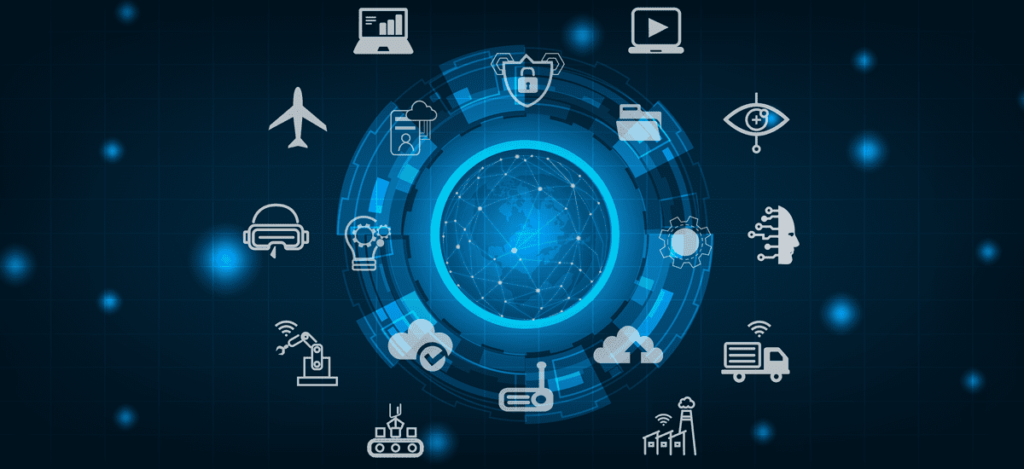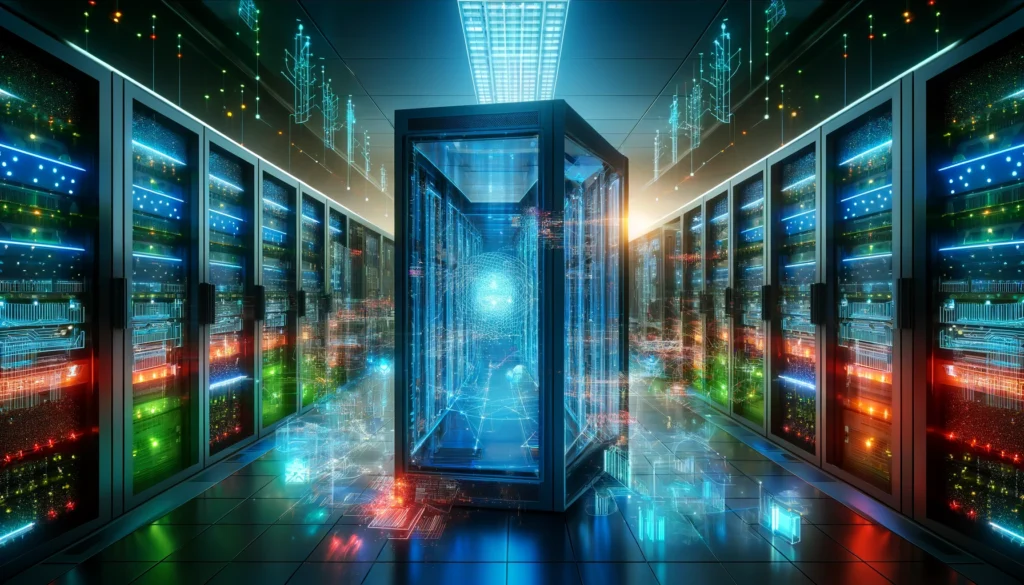In today’s rapidly evolving digital landscape, businesses are constantly seeking innovative solutions to address the increasing demands of data processing and storage. Traditional cloud computing models, while robust, often encounter challenges such as latency, bandwidth constraints, and data privacy concerns. This is where edge computing comes into play – a groundbreaking technology that promises to transform how data is processed and stored.
Table of Contents
ToggleWhat is Edge Computing?
Edge computing is a distributed computing paradigm that processes and stores data closer to where it’s generated, unlike traditional cloud computing. By deploying computing resources at the edge of the network, edge computing reduces latency and enables faster processing speeds. This proximity to the data source allows for real-time analysis and decision-making, making it ideal for applications like autonomous vehicles and IoT devices.
Additionally, it improves system efficiency by reducing the need to transmit data to centralized data centers, conserving bandwidth and alleviating network congestion. Overall, it represents a shift towards a more responsive and efficient data processing and storage model.
Key Components of Edge Computing:
Edge Devices:
Edge devices are physical endpoints like sensors and IoT devices that collect data from the environment. They act as the first point of contact for data collection, enabling real-time data capture at the source.
Edge Servers:
Edge servers are computing devices located closer to the edge of the network. They process and analyze data collected by edge devices in real-time, equipped with computing resources to perform tasks locally and reduce latency.
Edge Analytics Platforms:
Edge analytics platforms provide tools and software frameworks for running analytics and AI algorithms at the edge. They enable organizations to derive actionable insights from data collected by edge devices, facilitating real-time decision-making without relying on centralized cloud resources.
Edge Computing in Digital Transformation

Edge computing plays a pivotal role in driving digital transformation initiatives by enabling real-time data analytics, supporting IoT deployments, and facilitating edge AI applications. By processing data closer to its source, it reduces latency and enables faster decision-making, making it ideal for applications that require real-time insights, such as predictive maintenance and autonomous systems.
Additionally, edge computing supports IoT deployments by providing the necessary infrastructure for connecting and managing IoT devices efficiently. Furthermore, edge AI applications leverage local processing power to run AI algorithms at the edge, enabling intelligent decision-making without relying on centralized cloud resources.
Revolutionize Data Processing and Storage with Edge Computing
1. Reduced Latency and Improved Performance:
Reduced latency and improved performance are key benefits of edge computing. By processing data closer to its source, edge computing minimizes the distance data needs to travel, leading to faster response times. For instance, in a smart factory, edge computing allows IoT sensors to analyze data locally, enabling quick identification of anomalies without waiting for data to travel to a remote server. This real-time responsiveness is crucial for optimizing efficiency and minimizing downtime.
Additionally, reduced latency is vital for applications like autonomous vehicles, where split-second decisions are necessary for safety and performance. In summary, it’s ability to process data locally enhances operational efficiency and user experiences across various industries.
2. Enhanced Security and Data Privacy:
Enhanced security and data privacy are crucial benefits too. By keeping sensitive data closer to its source, edge computing reduces the risk of data breaches during transit. With data processing and storage occurring at the edge of the network, businesses can maintain greater control over their data and implement robust security measures tailored to their specific needs. This ensures that sensitive information remains secure and compliant with regulatory requirements, mitigating the risk of unauthorized access or data breaches. Additionally, edge computing enables encryption and access control mechanisms to be applied directly at the edge, providing an extra layer of protection for sensitive data.
This enhanced security posture not only safeguards critical information but also fosters trust among customers and partners, enhancing the overall reputation of the business. Overall, edge computing’s focus on security and data privacy makes it a compelling choice for organizations seeking to protect their valuable assets in an increasingly interconnected world.
3. Scalability and Flexibility:
Edge computing offers businesses scalability and flexibility by allowing them to adjust computing resources based on demand. This agility enables organizations to adapt to changing workloads, optimize resource allocation, and ensure cost efficiency. It benefits industries with unpredictable demands, like retail and hospitality, by enabling them to handle fluctuations seamlessly.
Additionally, it minimizes data transmission delays and enhances application performance by processing data closer to the source. It also supports distributed applications across geographically dispersed locations, improving reliability and resilience. Overall, edge computing empowers businesses to innovate, drive digital transformation, and gain a competitive edge in today’s dynamic business landscape.
4. Cost Savings:
It offers significant cost savings for businesses by minimizing the need for large-scale data center infrastructure and reducing data transfer costs. Organizations can utilize their existing infrastructure more efficiently, avoiding the expense of investing in additional hardware and bandwidth. By processing data closer to its source, edge computing reduces the need for data transfer over long distances, resulting in lower operational expenses. This cost-effective approach maximizes the value of existing resources and allows businesses to allocate their budget more strategically.
Moreover, by minimizing reliance on centralized data centers, it reduces the risk of downtime and service disruptions, further enhancing cost efficiency and operational resilience. Overall, edge computing presents a compelling opportunity for businesses to optimize their IT infrastructure and drive cost savings while improving performance and agility.
5. Edge Analytics and Insights:
Edge computing revolutionizes data analytics and insights by processing data at the edge of the network, in close proximity to where it is generated. This proximity enables businesses to extract actionable insights from their data in real-time, facilitating faster decision-making and driving improved business outcomes. For instance, in the retail sector, it can analyze customer behavior data collected from in-store sensors to optimize product placement and enhance the shopping experience.
Similarly, in healthcare, edge computing can process patient data from medical devices to provide timely alerts and interventions, improving patient outcomes. By enabling real-time data analytics, it empowers businesses across industries to derive valuable insights, leading to enhanced operational efficiency, better customer experiences, and increased innovation.
6. Support for Emerging Technologies:
It establishes a sturdy foundation for emerging technologies like 5G, AI, and IoT, facilitating businesses in harnessing these technologies more efficiently. By processing data locally and distributing computing resources, edge computing unlocks the complete potential of these technologies, fostering innovation and gaining a competitive edge.
For instance, it enables real-time AI inference at the edge, supporting low-latency applications on 5G networks, and empowering connected IoT devices. As a result, edge computing plays a crucial role in driving the next wave of technological advancement, enhancing efficiency, and facilitating transformative experiences for businesses and consumers alike.
Challenges and Considerations:
Network Connectivity Issues:
- Reliable network connectivity is crucial for edge computing deployments.
- Edge devices and servers rely on network connectivity for data transmission and communication.
- Organizations must ensure stable and high-speed network connections to avoid disruptions in data flow.
Data Synchronization Complexities:
- Data synchronization between edge devices and centralized systems can be challenging.
- Issues may arise in environments with intermittent connectivity or high data volumes.
- Organizations need to implement efficient data synchronization mechanisms to ensure data consistency across the edge and central systems.
Security Concerns:
- Security is a major concern in edge computing, particularly related to edge devices and data privacy.
- Organizations must implement robust security measures to protect against cyber threats and unauthorized access.
- Compliance with regulatory requirements, such as GDPR, HIPAA, or PCI DSS, is essential to ensure data privacy and regulatory compliance.
Interoperability Issues:
- Integrating edge computing solutions with existing IT infrastructure may pose interoperability challenges.
- Organizations need to plan and coordinate integration efforts to ensure seamless compatibility between edge computing systems and legacy systems.
- Interoperability issues can affect data exchange, system interoperability, and overall system performance.
Best Practices for Edge Computing Adoption:

Identify Appropriate Use Cases:
- Select use cases that align with business objectives and benefit from real-time data processing and reduced latency.
- Prioritize use cases that require localized decision-making and can leverage the advantages of edge computing technology.
Design Scalable and Secure Edge Infrastructure:
- Design edge infrastructure that is scalable, resilient, and secure.
- Consider factors such as edge device placement, network topology, and data storage requirements.
- Implement security measures to protect edge devices, data, and network communications from cyber threats.
Prioritize Data Governance and Compliance:
- Establish robust data governance practices to ensure data integrity, confidentiality, and regulatory compliance.
- Implement data management policies and procedures to govern data collection, storage, access, and usage.
- Adhere to regulatory requirements, such as GDPR, HIPAA, or PCI DSS, to protect sensitive data and maintain regulatory compliance.
In summary, edge computing is a game-changer in how data is processed and stored, especially in today’s fast-paced digital world. Unlike traditional cloud computing, it brings processing power closer to where data is generated, reducing delays and enabling faster decision-making. It’s ideal for applications like autonomous vehicles and IoT devices, where real-time analysis is critical. It also boosts efficiency by cutting down on data transmission to centralized centers, saving bandwidth and easing network congestion. With its focus on real-time insights, improved security, scalability, and cost savings, edge computing is paving the way for businesses to innovate and thrive in the digital era.
As businesses continue to embrace digital transformation, the role of edge computing in revolutionizing data processing and storage cannot be overstated. From reducing latency and improving performance to enhancing security and scalability, edge computing offers a myriad of benefits that can drive innovation and fuel business growth. By leveraging edge computing technologies, businesses can stay ahead of the curve and unlock new opportunities in the digital age.




